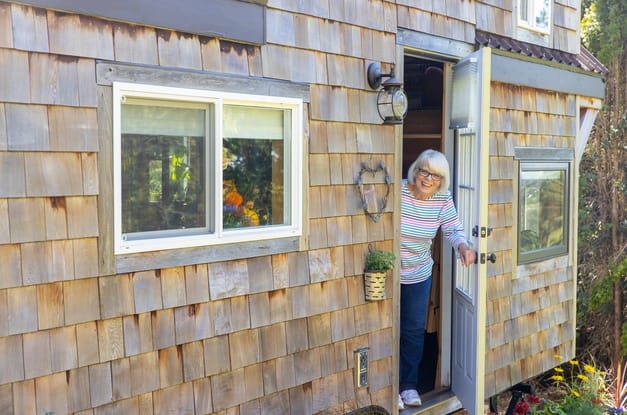Retirement is an exciting time to explore new options, whether it’s traveling, spending more time with family, or simplifying your life. For some, downsizing to a tiny home offers an appealing way to live more simply and affordably. But before jumping into tiny home life, it’s important to consider a few key factors.
Here’s what to think about before deciding if a tiny home is right for your retirement.
Space and Simplicity
Living tiny means embracing a minimalist lifestyle. The smaller footprint encourages downsizing possessions, focusing on what truly matters, and decluttering both physical and mental space. This minimalization can lead to less stress and a greater sense of freedom.
Additionally, reduced square footage means lower utility bills and easier cleaning, which is particularly attractive for retirees seeking to simplify their daily living. However, downsizing to a tiny home also means sacrificing extra rooms, storage space, and possibly privacy, which might feel restrictive after years in a larger home filled with memories.
Mobility and Location
By far, the greatest advantage of tiny homes is mobility. Unlike accessory dwelling units (ADUs), you can move a tiny home, offering retirees the chance to explore new communities or climates without the hassle of buying and selling a traditional house.
Part of the process, though, involves learning considerations to help choose a plot for your tiny home. Important factors include zoning regulations, access to utilities, and proximity to essential services.
Some municipalities have restrictions on tiny homes, which can limit your options, too. Researching local laws and understanding the community’s acceptance of tiny houses is crucial before making any investment.
Maintenance and Lifestyle
Tiny homes typically require less maintenance than larger houses, which appeals to retirees who want to reduce their chores. However, some household tasks, such as laundry or heavy cleaning, may still be challenging due to the demands of creative organization and adaptability.
Finding efficient storage solutions and adjusting to multi-functional spaces can be rewarding, but may take time to master. The lifestyle also means living closer to neighbors or family, which can be positive or challenging depending on your social preferences.
Cost and Investment
Financially, tiny homes can be a more affordable option upfront, allowing retirees to free up funds for travel, hobbies, or healthcare. Yet, it’s important to weigh the potential downsides.
Financing options for tiny homes are often limited, and resale values are usually unpredictable compared to traditional real estate. Deciding whether to move into a tiny home or remain in a paid-off larger house depends on your priorities—whether you value financial flexibility or comfort and space more.
Making the Decision
So, is a tiny home right for your retirement? It ultimately depends on your readiness to embrace simplicity and mobility while balancing your space needs and lifestyle preferences. Considering maintenance demands, financial implications, and location factors will help you make the most informed decision.






